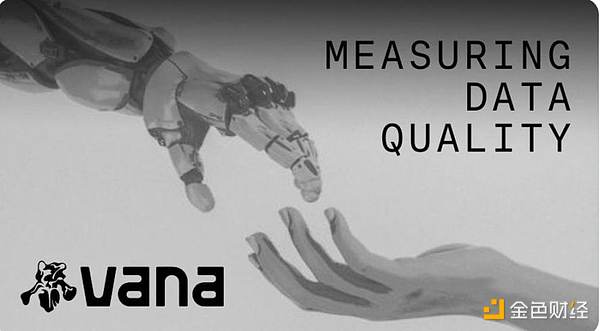Author: IceFrog Source: X, @Ice_Frog666666
Foreword
Vana: Derived from the word "Nirvana", it is committed to breaking free from the chains of giants!
In today's era where data is a "gold mine", personal data is being seized and commercialized by technology giants for free.
This unfairness prompted the birth of Vana, our protagonist today, whose goal is to break the existing data economic model, allowing users to regain ownership and control of their own data, and then use this data to train an AI model, so that users can directly benefit from their own data and become the masters of their own data.
This article will deeply analyze the technical architecture, innovation mechanism and development status of the Vana project.
1. Project Background: The Beginning of Data Democracy
Current Status of Data Monopoly
In the Web2 era, platform companies commercialize by collecting user data for free. For example, Toutiao, owned by ByteDance, can generate tens of billions of RMB in advertising revenue a year. Even if content creators get a certain share on the platform, the core interests are still firmly controlled by the company.
In the Web3 era, this phenomenon has intensified. Reddit earned $203 million in 2024 alone by signing data licensing agreements with AI companies, but users who contributed content to the platform received almost no benefits. This imbalance prompted the birth of Vana.
Vana's Vision
Vana's goal is to break the existing data economy model, allowing users to regain ownership and control of their own data, and train AI models with data to gain direct benefits and become the masters of their own data.
II. Founding Team: Pioneers from MIT

Vana was co-founded by two Filipino entrepreneurs, Anna Kazlauskas and Art Abal:
Anna Kazlauskas: has a background in computer science and economics, participated in Ethereum mining in the early days, and has conducted data research in international financial institutions. She also served as a policy advisor to the Prime Minister of East Timor and designed a legal system that ensures equality for all.
Art Abal: Master of Public Policy at Harvard University, who led innovative data collection methods at Appen, an AI training data provider.
The two worked together on the TOCA project, which provided low-income people in the Philippines with the opportunity to be paid for contributing data, laying the foundation for the development of Vana.
III. Vana’s core innovation and technical architecture

1. Data democratization solution
Vana’s proposed solutions include:
Data autonomy: Users have full control over their personal data, and can choose not to upload their data to the chain, retaining the final right of use.
Value redistribution: Users gain economic rewards by contributing data, and the token mechanism realizes value flow, creating a user-centered data economic model.
2. Data Liquidity Pool (DLP)
DLP is Vana’s core technological innovation and can be understood as a “digital warehouse” that securely stores user data. Its key features include:
Data ownership belongs to users, and governance token issuance is supported.
Contributors are rewarded with tokens based on data quality to achieve a “data mining” model.
Vana has developed 300 data DAOs, processing 1.7 million transactions per day and attracting more than 1.3 million users. For example, Reddit Data DAO attracted 140,000 users within a week of its launch.
3. Contribution Proof Mechanism and Data Storage Solution
To ensure data quality, Vana introduces a multi-dimensional contribution proof mechanism and adopts an encrypted storage solution:
The user's original data is not on the chain, and can be stored in the personal cloud, only submitting encrypted links and hash values.
The verification node accesses the data through authorization and performs a multi-node weighted assessment of the data quality.
4. Nagoya Consensus
Drawing on Bittensor's Yuma Consensus, the Nagoya Consensus improves the fairness of the system by verifying the mutual scoring of nodes. Its core features include:
Fourth, Financing: Favored by Top Institutions
Vana has won the favor of well-known capitals, and has raised US$25 million so far:

Seed round: Polychain led the investment of US$2 million;
Strategic round: Coinbase Ventures led the investment of US$5 million;
Round A: Paradigm led the investment of US$18 million.
The investment lineup includes Coinbase Ventures, Casey Caruso, Packy McCormick, etc. Former partners of Paradigm also participated in the investment, reflecting the industry's high recognition of Vana's model.
V. Development Status: The Dawn of Data Economy
Vana has completed the three-stage development plan:

Initial technical architecture construction;
The rapid growth of data DAO, with the number of users exceeding one million;
The mainnet and tokens are about to be launched, and the foundation was established yesterday.
Dataset Construction
Vana is committed to creating an unprecedented AI dataset, with data breadth and quality far exceeding GPT-3, which can lay a solid foundation for large-scale AI applications in the future.
Media Coverage and Community Influence
As the first out-of-circle project led by Filipinos, Vana has received extensive media attention and provided a new perspective for individuals to regain control of data through a series of innovative practices.
VI. Conclusion: Redefining the Value of Data
Whether Vana can ultimately fully realize its vision, its "data democratization" concept will surely bring profound inspiration to the industry. By giving users data autonomy, Vana has fired the first shot in challenging technology giants and provided us with an important opportunity to re-examine the fairness of the data economy.
In the new data-driven world, the ownership and value distribution of personal data may be ushering in a real revolution.
 JinseFinance
JinseFinance
 JinseFinance
JinseFinance JinseFinance
JinseFinance JinseFinance
JinseFinance JinseFinance
JinseFinance JinseFinance
JinseFinance Nell
Nell Bitcoinist
Bitcoinist Nulltx
Nulltx Nulltx
Nulltx Nulltx
Nulltx